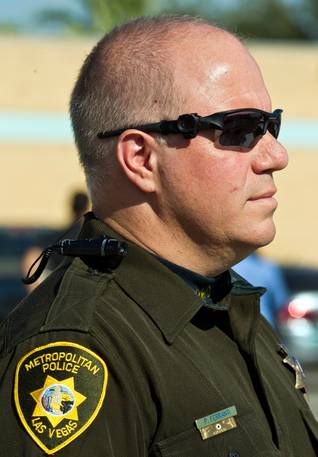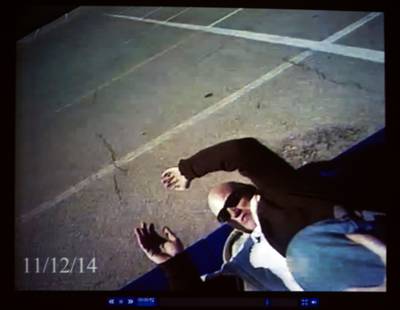
Metro Police Sgt. Peter Ferranti wears a body worn camera on his shoulder during a media event at the Mohave Training Center on Wednesday, November 12, 2014.
Monday, April 20, 2015 | 2 a.m.
↪
After a series of questionable police shootings and a subsequent federal intervention, Las Vegas Metro Police became a role model for law enforcement agencies struggling with accusations of racial bias.
The rigorous investigation by the U.S. Justice Department led the local agency to transform the way it interacts with the public, and law enforcement experts now praise Metro for its overhaul.
“There are some things the Las Vegas Metropolitan Police Department does really well that other agencies should consider doing,” said George Fachner, a researcher at Virginia-based CNA Analysis & Solutions who helped the Justice Department do its analysis.
Metro has adopted at least 72 of the 79 recommendations made by the Justice Department. Here’s a look at four:
Bias classes
Metro now conducts classes to help officers detect bias in the way they police.
Researchers determined that most of the unarmed suspects shot by Metro officers during the incidents in question were black. The study also found most of the suspects officers stopped and subsequently shot were black.
To combat those trends, Metro officials began offering courses on “fair and impartial policing” to teach officers how to rein in racial bias.
Body cameras
Metro is in the middle of a $1.6 million pilot program to research the effectiveness of body cameras to enhance police transparency. Cameras are being worn by nearly 200 officers as part of the yearlong volunteer study, which began in November.
Sheriff Joe Lombardo, a proponent of the technology, says he wants to equip 436 more patrol officers with cameras. Funding could be approved as early as this month, and the agency could start buying new cameras by July.
Metro’s body cameras have helped unearth a case of excessive force by one officer and exonerated others accused of improper behavior.
Critical investigation procedures
Metro officials changed how they investigate officer-involved shootings. The agency formed the Critical Incident Review Process for investigating police shootings, replacing a system long blamed for favoring officers during investigations.
Metro formalized a peer review of its use-of-force investigation reports and worked with community leaders and stakeholders to establish expectations and protocol for releasing information about officer-involved shootings. For example, Metro officials now conduct news conferences every time an officer fires a gun on the job, and video of every news conference is posted online.
More training
Metro had been criticized for not doing enough to teach officers how to minimize conflict during tense encounters with suspects, so agency officials added training. The department also created a reality-based training program that uses more realistic use-of-force scenarios to better prepare officers.
Officers also are getting trained more often. The agency now holds refresher courses for video training once given only to new hires.


Join the Discussion:
Check this out for a full explanation of our conversion to the LiveFyre commenting system and instructions on how to sign up for an account.
Full comments policy